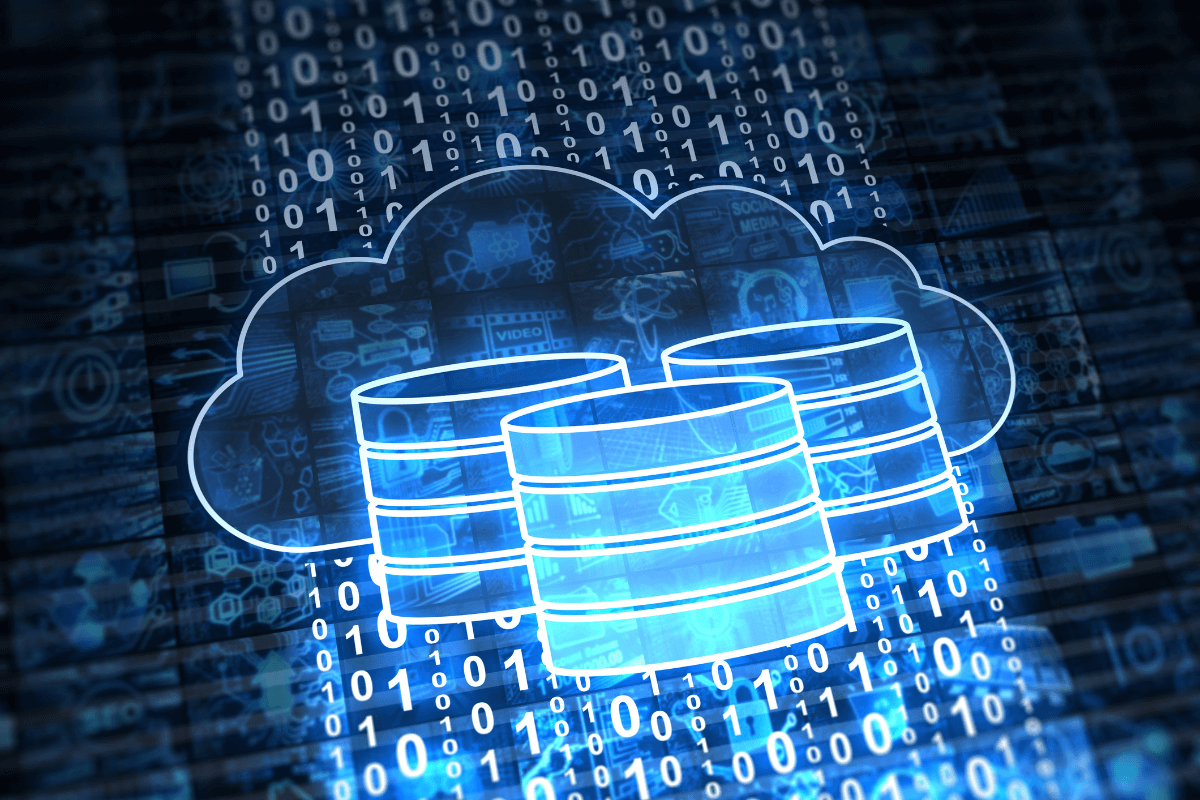Jet-Stream Is Proud to Introduce Its New Pricing Model: Pay-Per-Minute
Last updated: 2 November 2023

- One all-in low cloud price per minute
- Free large bundles for transcoding, storage, and traffic
- Competitive usage rates for extra transcoding, storage, and traffic
- Free applications, unlimited use
1) One low cloud price per minute, all in
Starting at just €0,0075 per minute.
Regular clouds are generic clouds and can be used for a wide range of applications and use cases. You can cherry-pick any service you like, combine services and you are charged micro fees per transaction, just for what you use. (See below for the 5 reasons why clouds are great).
Clouds sound great but they come at a price, literally: dozens of unexpected micro fees quickly become huge invoices once you start scaling up. (See below for the 5 reasons why micro fees are a bad idea).
Jet-Stream Cloud on the other hand is a purpose-built cloud, for which it is not needed to offer hundreds of individual microservices and micro fees. With Jet-Stream Cloud you pay a transparent all-in price per minute. Thanks to the bundling of services and running its own infrastructure, Jet-Stream Cloud is available from just €0,0075 per minute, including storage, traffic, and transcoding bundles, and including unlimited use of video players, analytics, packaging, security features, multiple CDNs and many more high-end professional streaming services.
Your invoice is finally predictable, manageable, and transparent. You will only see charges for:
- All-in cloud Free, per minute (month or annual commit)
- (optional: extra transcoding charge, per minute)
- (optional: extra storage charge, per minute)
- (optional: extra traffic charge, per minute)
- (optional: extra support charge, per ticket)
By offering a unique price-per-minute model, Jet-Stream makes the use of cloud services affordable, scalable, transparent, and predictable. You still only pay for what you use but at much lower rates compared to generic clouds and video platforms.
2) Free large bundles for transcoding, storage, and traffic
Jet-Stream offers four cloud packages, and each package contains free transcoding, storage, and traffic bundles:
- Basic: Free 100 GB storage, 1 TB traffic, 600 transcoding minutes per month.
- Pro: Free 1 TB storage, 5 TB traffic, 3000 transcoding minutes per month.
- Enterprise: Free 5 TB storage, 25 TB traffic, 6000 transcoding minutes per month.
- Broadcaster: Free 50 TB storage, 200 TB traffic, 12000 transcoding minutes per month.
By offering multiple packages and bundling large volumes, Jet-Stream customers benefit from a predictable fixed and low monthly budget compared to pay-as-you-go cloud services and video platforms.
3) Competitive usage rates for extra transcoding, storage, and traffic
Prices for extra services are offered at progressive discounts, based on volume and commitment:
- 4x redundant 8K high-performance storage: from €0,01 per GB.
- Global Multi CDN traffic: from €0,005 (volume) and €0,0075 (premium) per GB.
- 4K live and vod transcoding: from €0,005 (24/7) and €0,02 (vod, live) per minute.
For large customers, wholesale cloud options such as dedicated storage, dedicated origins, dedicated transcoding, and wholesale CDN contracts are available, further reducing their OPEX.
4) Free applications
Each Jet-Stream account comes with free and unlimited licensing of numerous professional streaming applications, including:
- Redundant live encoding via SRT, RTMP, RTSP, HTTP, Icecast.
- 4x redundant VOD origins at 2 zones.
- 2x redundant live origins at 2 zones.
- Real-time packaging for vod and live to HLS and DASH.
- Automated footprint pooling for viral content.
- Active Multi-CDN including several integrated CDNs.
- Professional analytics with long data retention.
- Professional HTML5 video player for web and mobile.
- Professional security features including geo-fencing and URL signing.
- Mix Workflow Orchestration GUI and APIs, users & rights.
- Contextual Video Advertising with AI context generation.
Depending on the chosen account level, Pro, Enterprise, and Broadcaster features are enabled such as interactivity, advertising, remote origins, Multi CDN customization and control, dynamic branding, H.265 and AV1 encoding, white label multi-account management, DVR, and encryption.
By bundling these services unlimited and for free, Jet-Stream Cloud saves its customers tremendous time and costs in video platforms, licensing players, sourcing third party analytics, creating a multi-CDN stack, advertising, and orchestrating bespoke workflows.
Jet-Stream Cloud: The Best of Both Worlds
Jet-Stream Cloud brings you the same benefits of generic clouds: scalability, cost efficiency, accessibility, flexibility, disaster recovery, business continuity, agility, and innovation.
Jet-Stream Clouds adds: much higher performance and uptime; a wide range of built-in streaming applications for encoding, transcoding, packaging, origin, multi-CDN, player, analytics, and security; code-less tuning, workflow orchestration and automation tools; and powerful APIs so you can integrate your own services and mix with those of Jet-Stream.
Jet-Stream also solves the pricing pains with clouds with transparent, upfront manageable, resources manageable and full control over costs, with its new plans:
| Cloud / minute | Transcode minutes | Storage / GB | Traffic / GB | |
|---|---|---|---|---|
| Basic | € 0,0075 | 600 | 100 | 1000 |
| Pro | € 0,015 | 3000 | 1000 | 5000 |
| Enterprise | € 0,03 | 6000 | 5000 | 25000 |
| Broadcaster | € 0,09 | 12000 | 50000 | 200000 |
With all the unlimited bundled features, cloud orchestration that saves you tremendous time and operational costs, a green energy low footprint service, and a 100% EU souvereign GDPR compliant service, Jet-Stream Cloud is your number one service for live radio, live television, live events, video-on-demand hosting, podcast hosting, and music hosting. Fly beyond the clouds.
More resources:
Jet-Stream Pricing and Features page: https://jet-stream.com/pricing
Jet-Stream Pricing FAQ:
- How does the Jet-Stream pricing model work?
- How is Jet-Stream Cloud charged?
- How is support charged?
- How is transcoding charged?
- How is traffic calculated?
- How is storage calculated?
The 5 reasons why clouds are great
Cloud services offer various advantages that can offer significant benefits. Here are five key benefits of using cloud services:
1. Scalability:
Cloud services provide the ability to scale resources up or down as needed. This elasticity allows businesses to easily accommodate changes in demand, whether it’s due to seasonal fluctuations, growth, or unexpected spikes in usage. Scalability helps optimize resource utilization and cost efficiency.
2. Cost Efficiency:
Cloud services often follow a pay-as-you-go or pay-for-what-you-use pricing model, which can be more cost-effective than traditional on-premises infrastructure. Businesses can avoid large upfront capital expenditures and only pay for the resources and services they actually consume. This cost flexibility is particularly advantageous for startups and small businesses.
3. Accessibility and Flexibility:
Cloud services are accessible from anywhere with an internet connection. This accessibility fosters remote work, collaboration, and flexibility in how employees access and use resources. It enables organizations to adapt to changing work environments, including remote and hybrid work setups.
4. Disaster Recovery and Business Continuity:
Cloud providers typically offer robust backup and disaster recovery solutions. Data stored in the cloud is often replicated across multiple data centers, providing redundancy and data resilience. In the event of hardware failures, natural disasters, or other disruptions, businesses can quickly recover data and applications, minimizing downtime and ensuring business continuity.
5. Innovation and Agility:
Cloud services enable faster development and deployment of applications and services. Development teams can leverage cloud resources and tools to build, test, and release software more rapidly. This agility allows businesses to respond quickly to market changes, experiment with new ideas, and stay competitive in a rapidly evolving landscape.
In addition to these key benefits, cloud services offer other advantages such as automatic updates, security features, and the ability to leverage advanced technologies like artificial intelligence and machine learning. However, it’s important for organizations to carefully plan their cloud strategy, consider security and compliance requirements, and manage costs effectively to fully realize these benefits.
The 5 reasons why micro fees are a bad idea
Cloud micro pricing, often referred to as pay-as-you-go or usage-based pricing, has become a popular model due to its flexibility and scalability. However, it also comes with several downsides, including intransparency, hidden costs, and unexpected expenses, especially at scale. Here are some of the key drawbacks:
1. Intransparency:
- Complexity: Cloud providers offer a vast array of services and products, each with its own pricing structure. Understanding and predicting costs can be challenging, as it requires navigating a complex pricing matrix.
- Lack of visibility: Micro pricing models often involve many small, individual charges for various resources (e.g., compute instances, storage, data transfer). These charges can be difficult to track and manage, leading to a lack of visibility into overall expenses.
2. Hidden Costs:
- Data transfer fees: Many cloud providers charge for data ingress and egress, and these costs can quickly add up, especially when dealing with large datasets or high traffic volumes.
- Premium services: Some premium or specialized services may not be covered in basic pricing plans, leading to unexpected costs when these services are used.
- Storage costs: Storing data in the cloud can accumulate costs over time, and it may not always be apparent how much data is being stored and how much it costs.
3. Resource sprawl:
- Scalability and ease of provisioning resources in the cloud can lead to resource sprawl. Unused or underutilized resources can accumulate costs without providing value.
- Auto-scaling challenges: While auto-scaling can help optimize resource usage, it can also lead to increased complexity and the potential for unexpected cost spikes during traffic spikes.
4. Lack of cost control:
- Limited cost controls: While cloud providers offer tools and policies for cost control, managing costs can be challenging, especially when teams are not adequately trained or do not have the necessary monitoring and management tools in place.
- Budgeting issues: Without proper budgeting and cost monitoring, it’s easy for expenses to spiral out of control, leading to financial surprises.
5. Compliance and governance:
- Compliance challenges: Meeting regulatory and compliance requirements can be more complex in a cloud micro pricing model, as tracking and auditing expenses may be more difficult.
- Governance issues: Ensuring that various teams and departments adhere to cost management policies can be challenging, leading to unexpected costs as resources are provisioned independently.




